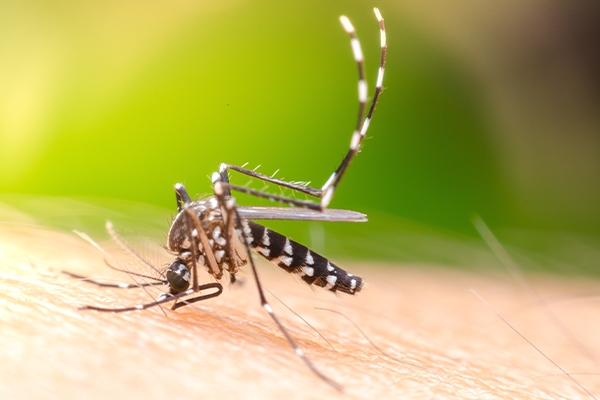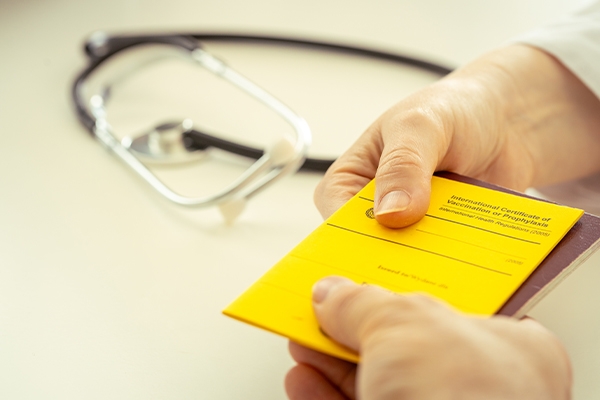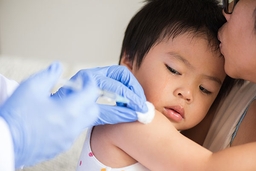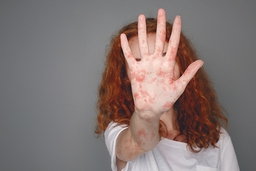Yellow Fever: Transmission and Prevention

Yellow Fever is an infectious disease caused by the Flavivirus and transmitted through the bite of infected mosquitoes — primarily Aedes spp., Haemagogus spp., and Sabethes spp. These mosquitoes can bite throughout the day, especially in the morning and late afternoon.
The disease is endemic in Africa and South America, where outbreaks can occur in areas with low vaccination coverage.
The name “yellow fever” comes from one of its hallmark symptoms, jaundice, or yellowing of the skin and eyes, caused by liver damage from the virus.
Interestingly, yellow fever is often mistaken for malaria because both share similar early symptoms such as high fever, muscle pain, and fatigue.
However, their causes are different: malaria is caused by a parasite, while yellow fever is viral, and they are transmitted by different types of mosquitoes.
Symptoms of yellow fever
Symptoms typically appear 3–6 days after infection.
Most cases are mild and resolve on their own, with early symptoms resembling the common flu, such as:
- Fever and chills
- Muscle pain (especially in the back)
- Headache
- Nausea or vomiting
- Weakness and fatigue
However, in a small percentage of cases, the illness can progress to a toxic phase, which is far more severe.
In this stage, the virus begins attacking vital organs like the liver and kidneys, leading to:
- Yellowing of the skin and eyes (jaundice)
- Severe abdominal pain
- Liver and kidney failure
- Bleeding from the mouth, nose, or digestive tract
In severe cases, the fatality rate can reach up to 50%, especially when patients do not receive timely and adequate medical treatment.
How yellow fever spreads

Unlike some other mosquito-borne diseases, infected humans are not dead-end hosts.
This means that during the viremic phase (when the virus is active in the bloodstream), an infected person can transmit the virus to other mosquitoes, which can then spread it to new hosts.
Individuals infected with yellow fever carry high viral loads in their blood during the first few days of illness, making it possible to pass the virus to mosquitoes that bite them.
Transmission is most common during warmer months, and mosquitoes can even bite through thin clothing.
To reduce the risk of bites, treat clothing with insect repellents containing permethrin, DEET, oil of lemon eucalyptus, or other EPA-registered repellents.
Prevention and vaccination

Preventing yellow fever is much easier than treating it.There are two main strategies: vaccination and protection against mosquito bites.
1. Yellow Fever vaccination
The Yellow Fever vaccine is one of the most effective vaccines available.
A single dose provides lifelong protection for most people.
The World Health Organization (WHO) recommends vaccination for:
- People living in or traveling to endemic areas, such as Africa and South America
- Healthcare workers or field workers at high risk of exposure
The vaccine should be administered at least 10 days before travel to allow the body to develop immunity.
Some countries even require a Yellow Fever Vaccination Certificate (International Certificate of Vaccination) as an entry requirement.
2. Protect yourself from mosquito bites
In addition to vaccination, personal protection from mosquito bites is essential.
You can take the following precautions:
- Use mosquito repellents containing DEET, picaridin, or oil of lemon eucalyptus.
- Wear long-sleeved shirts and long pants.
- Sleep under insecticide-treated mosquito nets, especially in endemic areas.
- Avoid outdoor activities in the early morning and late afternoon, when mosquitoes are most active.
- Eliminate standing water around your home, which can serve as mosquito breeding grounds.
Stay protected
While yellow fever might sound like a rare tropical disease, the risk remains real in many regions of the world.
With proper vaccination, environmental hygiene, and consistent mosquito protection, yellow fever is entirely preventable.
If you plan to travel to an area where yellow fever is a concern, consult a healthcare professional and get vaccinated before departure.
Remember — the best protection always starts with prevention. Visit GWS Medika Clinic, a health clinic in Jakarta, to get vaccinated.



